Essay Organization
An essay is a short piece of writing that tells a story (a narrative essay), argues for or against something (a persuasive essay) or gives information.
They all share the basic forms of essay organization, but each type of essay has a different purpose. Informative essays can
• explain a process (the steps to do something) or an idea,
• describe a place or feeling so that the reader can imagine experiencing it too,
• compare and contrast two or more things, showing the ways they are similar and different,
• or analyze the causes and effects of a historical event or process. (Consider what happened and why, its consequences, and its significance: why it matters.)
We can organize cause and effect essays in two main ways. Authors can identify the many causes of an event. They can also discuss all the consequences that follow from one cause.
Authors of persuasive essays, in particular, need to provide clear evidence to support (back up) each claim they make. They also need to consider the arguments of the opposing side. That enables them to point out any faults in the reasoning or show why their own arguments are better.
Essay Structure
All English essays are organized into paragraphs-- groups of sentences with one main idea. In handwritten essays, paragraphs are usually indented. (Each new paragraph starts several spaces in from the left margin.)
Typed or printed essays, articles, and books are often not indented. Instead, there is an extra blank line between paragraphs to make the essay or article easier to read.
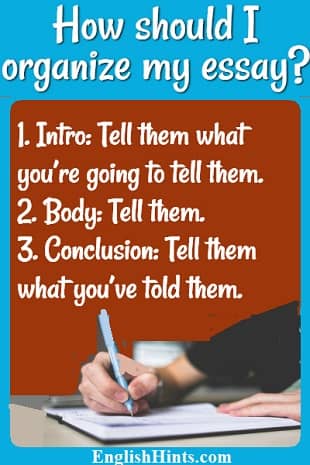
The first (introductory) paragraph states the thesis, or central idea, of the essay.
The beginning of an essay will often have a ‘hook’ as well. The hook can be a story, question, or example. It helps to introduce the topic, show its significance, and arouse reader interest.
(In long essays or articles there may be several paragraphs in the introduction.)
The body paragraphs offer evidence and examples to support the main idea.
The last paragraph is a conclusion, summarizing the evidence and restating the thesis.
Paragraph Structure
Every paragraph has a topic sentence which states the main idea of the paragraph. (It's often the first sentence.)
The rest of the sentences offer specific details and examples to explain, illustrate, and support the main idea.
Transition words include and, but, or, however, although, because, since, next, then, and finally. They show the relationships between the ideas in a paragraph and between paragraphs.
The final paragraph of an essay summarizes its ideas and states a conclusion. It should emphasize the points the author most wants the reader to remember.
Almost all English essays and other writing follow this basic format. It's the proper IELTS or TOEFL essay structure. It's also the way editorials, business proposals, magazine articles, and school term papers are organized.
English Essay Organization has been summarized like this:
- Tell them what you're going to tell them.
- Tell them.
- Tell them what you've told them.1
More on Essay Organization
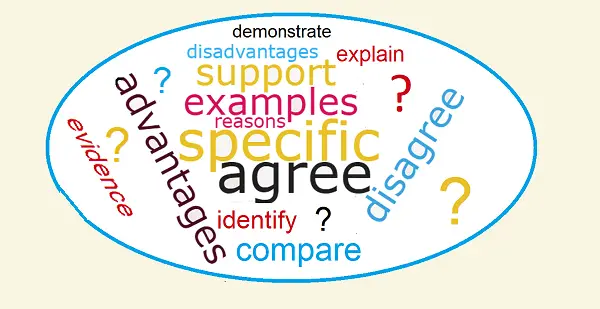 Do you understand what these essay prompt words mean?
Do you understand what these essay prompt words mean?Essay prompts are the instructions that tell you what to write about. Writing Test Vocabulary explains the exact meanings of these words. (They can help you understand essays as well as give the examiners what they want.)
Check the page out if you are unsure of the differences between 'explain,' 'illustrate,' and 'demonstrate,' etc.
It's essential to know what the test examiners expect!
See Academic Writing for the process of researching and writing an academic essay. TOEFL or IELTS Essay Sample and the end of Transition Words have essay examples to check.
English Essay Writing Practice explains what readers (& examiners) expect in English essays. It also suggests inexpensive, step-by-step help if you need more. (For example, to practice for an important test with an essay.)
Once you have written your first draft, see the Revision and Proofreading Checklist. It can help you revise and improve your essay. Then proofread it to find and correct mistakes.
Related Pages
Examples of the main types of transition words, plus a sample essay with gaps to practice common transition words like also, although, because, and but.
Tips for TOEFL or IELTS essays and a sample essay to demonstrate best practices.
Key points to consider for English essay writing practice (+ inexpensive packets of essay practice materials for individuals or classrooms.)
Home> Learn to Write English > Essay Organization.
1 Here's more information on that quote and its sources.
Didn't find what you
needed? Explain what you want in the search box below.
(For example, cognates, past tense practice, or 'get along with.') Click to see the related pages on EnglishHints.
| site search by freefind | advanced |
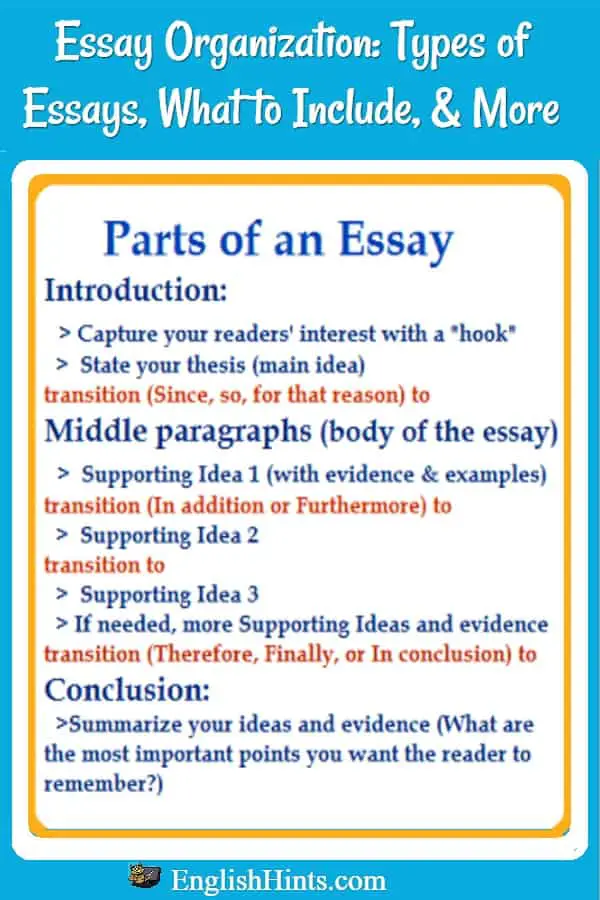
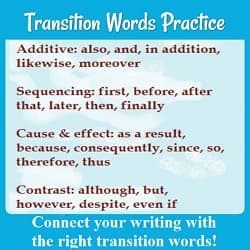
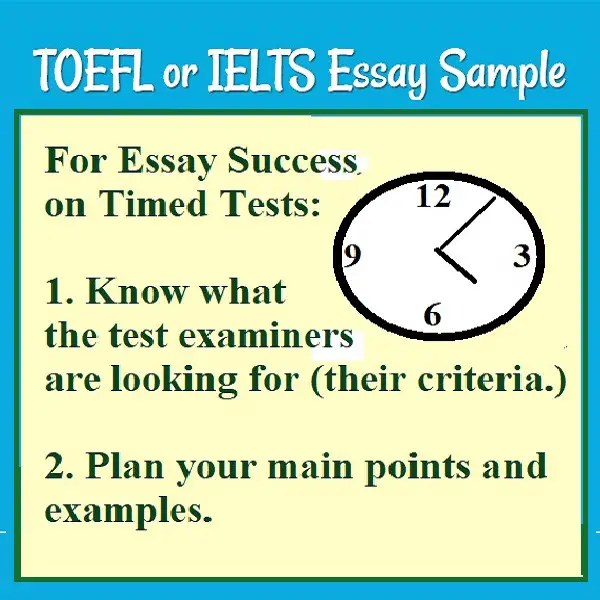
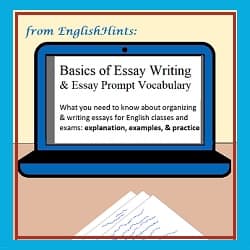






New! Comments
What do you think about what you just read? Leave me a comment in the box below.